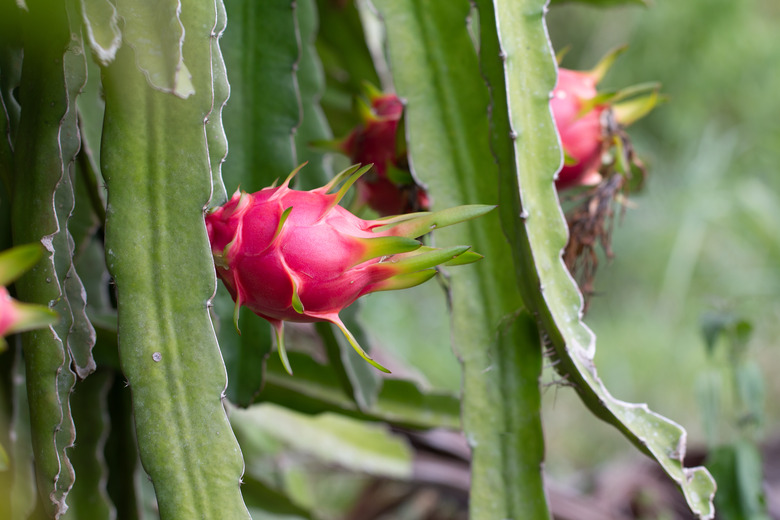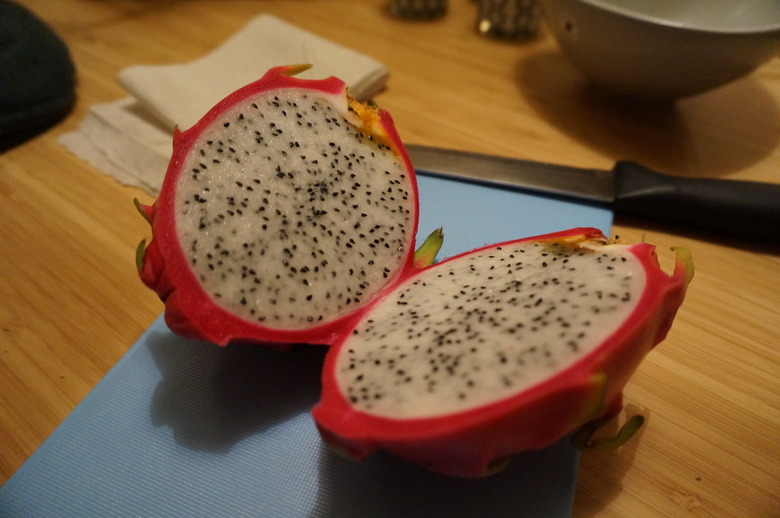How To Start A Dragon Fruit Cactus From Seed
The dragon fruit or pitaya cactus (Selenicereus undatus) grows best from cuttings, but it can also be grown from seed, albeit with variable results. This cold-sensitive tropical plant grows outdoors within U.S. Department of Agriculture plant hardiness zones 9b to 11a, although indoor cultivation of dragon fruit cactus houseplants is also possible if they are grown in a warm, sunny position.
According to the University of Florida IFAS Extension, a seed-grown dragon fruit cactus may not resemble the parent plant, and it can take up to seven years to bear fruit. But the process of starting the seeds and growing the plants is simple to do if the dragon fruit seeds are kept under the right conditions.
Things Needed
- Wooden spoon
- Kitchen sieve
- Newspaper
- Plastic bags (optional)
- Starter pots
- Seed-starting compost or potting soil
- Warming mat
- Misting bottle
- Containers (optional)
- Support structure
Gathering Dragon Fruit Seeds
Seeds taken from fully ripened dragon fruit germinate best whether the seeds are sown fresh or dried for later use.
Dragon fruit plants flower in summer and autumn, producing their fragrant and showy flowers during the overnight hours. A successfully pollinated flower will later develop into a 4 1/2-inch-long fruit with pink skin and light green tentacle-like frills around the outside.
Ripe dragon fruit flesh varies in color from white to red depending on the cultivar, but all varieties contain a profusion of tiny black seeds.
Preparing the Seeds for Storage
Scoop out the flesh from a ripe dragon fruit and gently mash it to a pulp using the back of a wooden spoon. Place the pulp in a kitchen sieve and run water over it as you stir the pulp with your fingers. Most of the flesh will dissolve and leave behind the seeds, which can be spread out on a sheet of newspaper to dry while you prepare pots.
Alternatively, you can dry the seeds completely and store them in a plastic bag inside the refrigerator until the following spring.
Starting Dragon Fruit From Seed
Dragon fruit seeds sprout well without any special pretreatment, but the process can be erratic, taking anywhere from a few days to eight weeks, according to Trade Winds Fruit.
- Start the seeds indoors in small starter pots filled with moist seed-starting compost or sterile potting soil.
- Sow the seeds at a depth of 1/4 to 1/2 inch.
- Set the pots in a bright location and warm the soil to between 70° and 85°F using a warming mat, because the seeds will not sprout in cool soil.
- Water the soil with a misting bottle whenever it feels nearly dry on the surface.
- Dragon fruit seedlings need plenty of light and warmth as they grow. Keep them in a sheltered location indoors with bright, indirect sun where temperatures stay warm. Slowly acclimate the seedlings to direct sunlight in spring when the sun is less intense.
- Once the dragon fruit seedlings are growing well, transplant them into a permanent garden bed or pot.
Growing Dragon Fruit Cacti
Regardless of whether they are growing in the garden or indoors in a pot, dragon fruit plants prefer full sun and loose, fast-draining soil.
**Well-draining soil:** Choose a sunny garden bed on a slight slope so water will drain away after watering or rain. Potted dragon fruit cacti grow best in pots with drainage holes at the base and potting soil formulated for cacti or orchids.
**Sun requirements:** Position indoor dragon fruit cacti near a sunny, south-facing window.
**Support structures:** Logee's Plants for Home & Garden recommends providing dragon fruit cacti with a support structure to climb up or cling to in order to support their heavy foliage and fruit.
**Watering:** Regular and appropriate watering is key to successfully growing dragon fruit cacti. Water from spring until autumn and discontinue watering during the late autumn and winter months so the soil can dry out. Saturate the soil whenever it feels dry on the surface, watering until it is completely saturated. Dragon fruit plants are not sensitive to water composition, but the North Carolina State University Cooperative Extension recommends watering potted dragon fruit cacti with lukewarm water rather than cold water.

